Threaded pipe - manufacturing, application and features
To connect metal pipes using several methods, including thread. It has proven itself in the installation of valves. This article will be devoted to methods of cutting internal and external threads on the pipe, as well as tools and accessories that are used in this case.
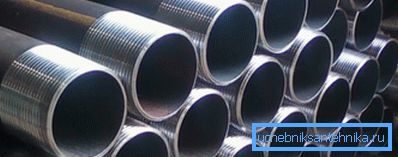
Types of tools
In this case, we are interested in pipe set.
It consists of:
- several screw plates, dies and taps, intended for cutting threads of various diameters;
- holder for ease of operation;
- additional tools including clamp and clamp.
Cutting rules
The process is carried out according to a specific algorithm. If the instruction is not respected, the occurrence of a marriage or breakage of a threaded device is only a matter of time.
Tip: follow the safety rules when working with taps and dies, otherwise it may cause injury to your hands.
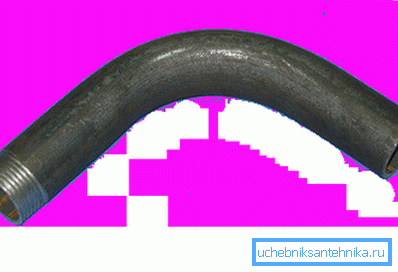
The main requirements that apply to the process and devices:
- It is forbidden to cut with a blunt and defective tool.
- A preliminary preparation of the metal pipe is required, for which a layer of dirt, rust and paint is removed from the area of the future thread. You must clean the surface before the metal.
- From the end of the product it is necessary to remove the outer chamfer with a grinder or file.
- During work, a lubricant or a special fluid must be applied to the working surface of the pipe and the cutters. It should be applied both before starting work and during the cutting process.
Use the die
A conventional thread-cutting thread is made from hardened tool steel. For threading inside it there are cutting edges, between which holes are made to exit the chip to the outside. With the help of the plate it is possible to make the necessary cutting on different types of pipes in a fairly short time.
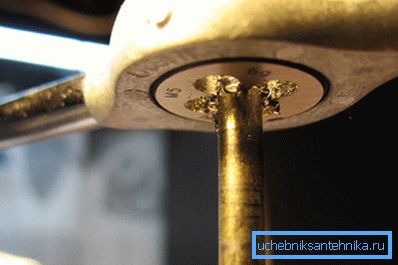
The process is carried out in this order:
- Clamp the pipe in a vertical position in a vise or other device.
- Remove the outer chamfer from the bare pipe.
- Insert into the holder a die for pipes of the desired diameter.
- Grease the cutters and pipe to facilitate the work.
- Align the plate with the end of the pipe strictly perpendicular to the axis of the latter. Otherwise, the misalignment of the device will cause the thread to break loose or its diameter will be changed. And in fact, and in another case, it will be considered a marriage.
- Rotate the holder clockwise and cut on the workpiece.
- After several turns, move the plate back to remove chips from it.
Tip: do the work smoothly, avoiding jerks. Do not forget to periodically lubricate the surface of the thread and the incisors.
- Having made the last turn, return Lerka to the initial position and pass through the thread again.
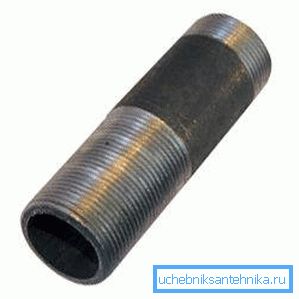
We use the screw die
There are two options for the device:
| Manual | Adaptation in its functionality is the same as the die, but it is more modern and versatile. The kit includes the holder and replaceable cutters, which are placed in its grooves. This makes it possible to change the cutters in a short time when they become dull. In addition, the screw die requires less effort when cutting. In the process of working the screw die requires less effort to create a thread. It is easier and safer to work with the device, because inside the holder there are guides for accuracy. More advanced versions of the tool are equipped with rattles, which allow rotating the holder in only one direction. Threading on the pipe is carried out in the following sequence:
|
| Electric | In this case, the tool is equipped with an electric motor, which allows the thread cutting process to occur very quickly, effortlessly and with the highest quality possible. Therefore, its price will be more expensive than the manual version. Before starting work, you need to fix it in the clamp included in the kit and press the “Start” button. Threading will happen in a few seconds. The convenience of the equipment is that it does not need to use a powerful vice for fixing, which also results in the mobility of the tool that can be attached to the pipe itself. |
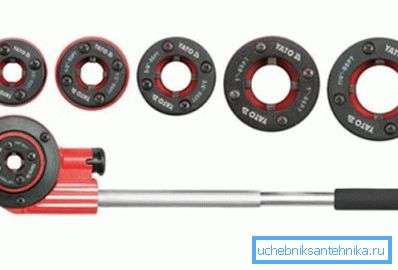
Tip: do not forget to periodically lubricate the surface during operation.
Use the tap
So called the cutting tool, which is a hardened screw. It has several longitudinal helical or straight grooves that create cutting edges. The design consists of a working part and a shank, ending in a square.
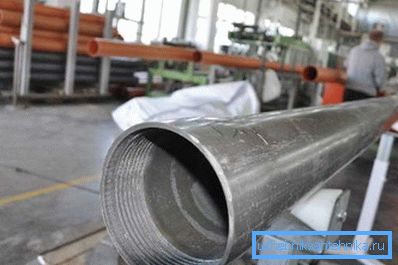
For the correct selection of the tap you need to know the exact internal diameter of the workpiece. For the work, you will need two tools, the first for removing the cutting chips, approximately 70%, and the second for finishing threads (30%).
Therefore, in the first stage, go through the internal diameter with a taper No. 1, and then finish the work No. 2. At the same time, do not forget that the pipe and the tap must be lubricated with lubricant, for example, machine oil.
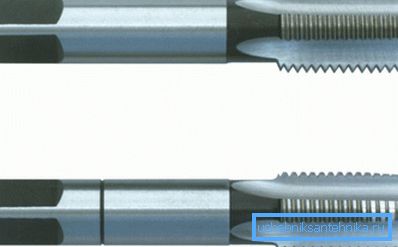
Causes of marriage
Trouble occurs in any work, however, when it comes to threading, the product is then no longer suitable for use. Experts therefore recommend threading as carefully as possible.
Below we consider the main reasons for which marriage can happen:
- Applied low-quality tool. Remember that blunt or rusty incisors can lead to damage to the workpiece without cutting high-quality threads.
- Without lubrication, the coils will break and there are often cracks on them.
- Great physical effort can cause a thread to break.
- The diameter of the dies and the screw die does not fit the diameter of the workpiece.
Conclusion
Threaded pipe joints have long been firmly established in the construction industry. Their use in pairing pipes allows you to quickly create a water supply system, gas or heating. During the manufacture of the thread should be used only high-quality tools, as well as comply with the process technology. The video in this article will help you find additional information on this topic.